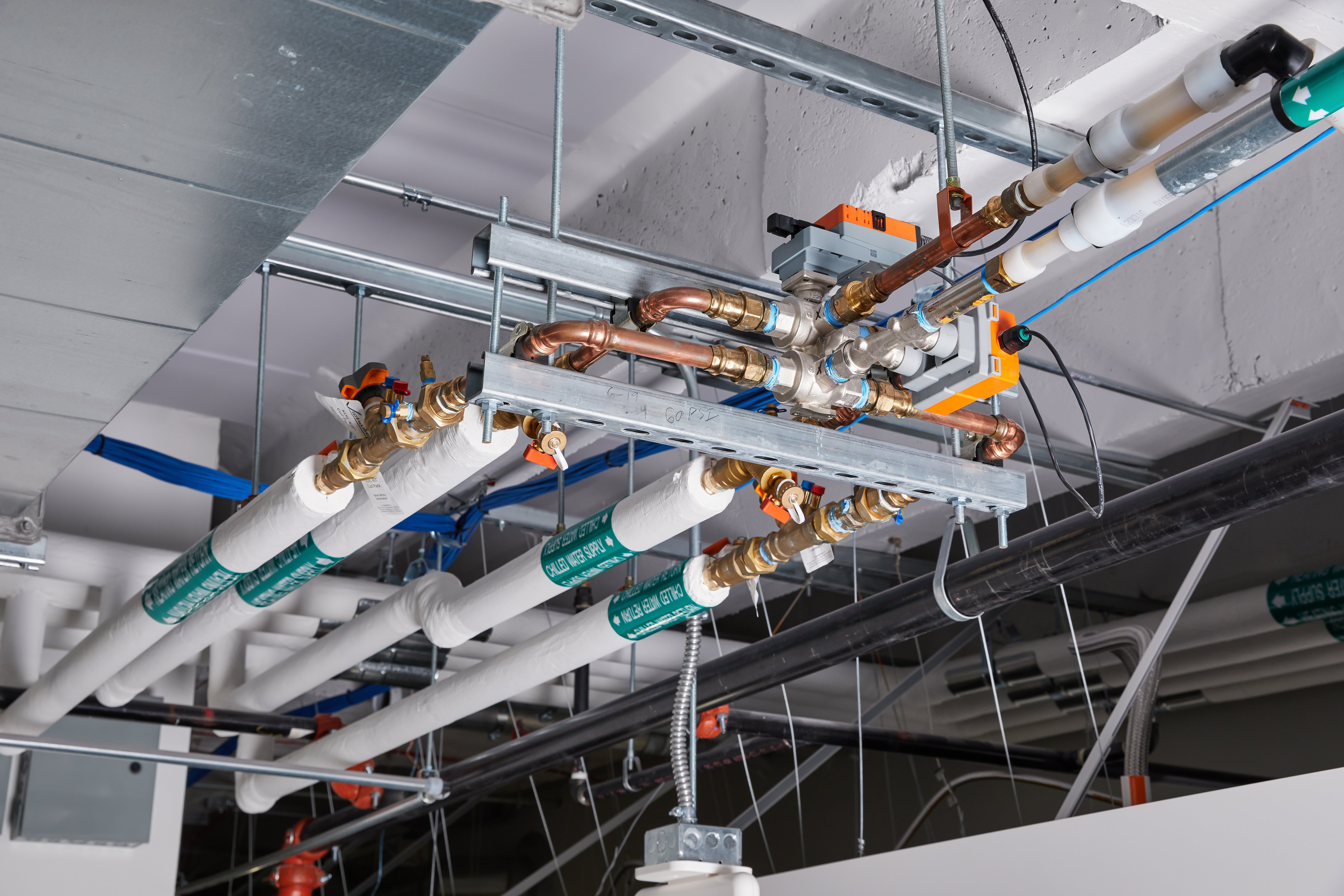How Control Valves and Hydronic Systems Interact
Motorized valves control and adjust water flow in a hydronic heating and cooling system. The flow through pressure dependent valves varies as the pressure (∆P) across the valve orifice changes. Typical pressure dependent valves include globe valves, zone valves, characterized control valves, standard ball valves, and butterfly valves. When pressure varies in a system, the flow will have an identical response. As the pressure drop decreases across a pressure dependent control valve, flow decreases, starving the coil or branch. When pressure drop increases across a pressure dependent control valve, flow increases, flooding the coil or branch. Overflowing the coil usually causes what we call low Delta T syndrome. This syndrome typically increases the energy consumption of chilled water pumps, decreases system overall operating efficiency, undermines occupant comfort, and increases overall operation cost.

With a pressure independent (PI) valve, one valve replaces two valves. A pressure independent (PI) valve combines a dynamic balancing valve and control valve to supply accurate and stable flow while maintaining a balanced system even when flow fluctuates as demand changes. When a standard control valve (pressure dependent) is oversized at average to light loads (95-99% of operation time), it may oscillate or hunt. The pressure independent valve has an equal percentage response curve under all conditions, which results in a linearized power output to the control signal. A pressure independent valve provides consistent flow for each degree of ball opening with no adjustments required. To maintain dynamic balancing, a PI valve needs a minimum of 5 psi pressure drop. The minimum differential pressure is significantly less than a pressure dependent control valve and circuit setter/balancing valve combined. PI values enable you to lower pump head pressure and reduce the high cost associated with over-pumping. With a pressure independent valve pressure variations are no longer a concern; the valve act with an inherent characteristic valve authority. Direct return systems can utilize pressure independent valves to achieve self-balancing behavior and eliminate costly reverse return piping.
Sizing a pressure dependent valve cannot be accurate without a firm understanding of the hydronic system. While valves are the final control element, balancing, coil sizing, coil response curve, and piping losses all play a role in accurate sizing. A control valve cannot be adequately sized without a full analysis of the system. All components interacts in a hydronic system, so the valves cannot be treated as a simple subject by themselves. Instead, the whole hydronic system has to be taken into account.
There is a good deal of data required for careful sizing and selecting valves, but when all of it is not available, the accuracy will suffer. The specifications do not always take as-built conditions into account and valves may be incorrectly sized. In such situations, the design engineer should be consulted. Every process, every coil has a unique response. It isn't easy to design a valve for every control process.
For more information and recommendations, please contact your local Belimo support.

